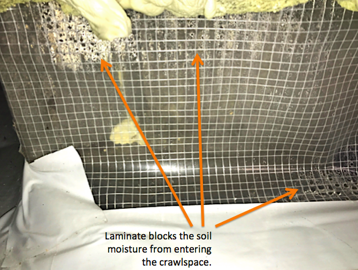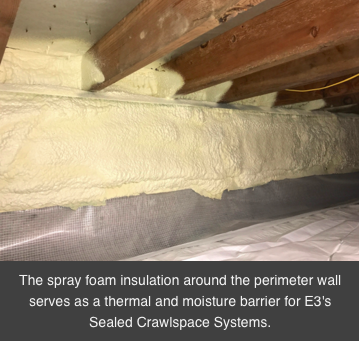Hurricanes Harvey and Irma brought a lot of rain to Nashville. How did your crawlspace weather the storms?
Moisture issues in crawlspaces are as common as pumpkins in October. That’s why it’s important to check on things under your house on a regular basis. Moisture in crawlspaces can accumulate in a number of ways, including:
- Humid air condensing on cool surfaces
- Gutter downspouts discharging water too close to the foundation
- Ground water seeping up through the unsealed crawlspace floor
- Water leaks from pipes.
With moisture comes a whole host of other issues, including mold, rot, rust, odors, poor indoor air quality, and damage to insulation and subfloors. A sealed crawlspace system will help keep moisture out!
We checked up on a client’s crawlspace shortly after the rain of Hurricane Harvey and found that the laminate was blocking a significant amount of moisture raising up from the soil, moisture that would have otherwise made it’s way into the space.

In addition to moisture management, E3’s Sealed Crawlspace Systems help protect against:
- rodents and insects
- buckled hardwood floors
- high moisture levels in your home
- cold floors
- rotten subfloors
- radon and soil odors
Sealed crawlspaces can reduce the load on your HVAC system too. Additionally, you can further improve indoor air quality, comfort, and efficiency when the duct work in the crawlspace is sealed properly.

If you haven’t checked on your crawlspace since the heavy rain in September, now is a great time to call an expert! E3 offers a thorough crawlspace inspection in each of our Home Diagnostic Packages. Explore our website to learn more about our Sealed Crawlspace Systems and our Home Diagnostic Services.









